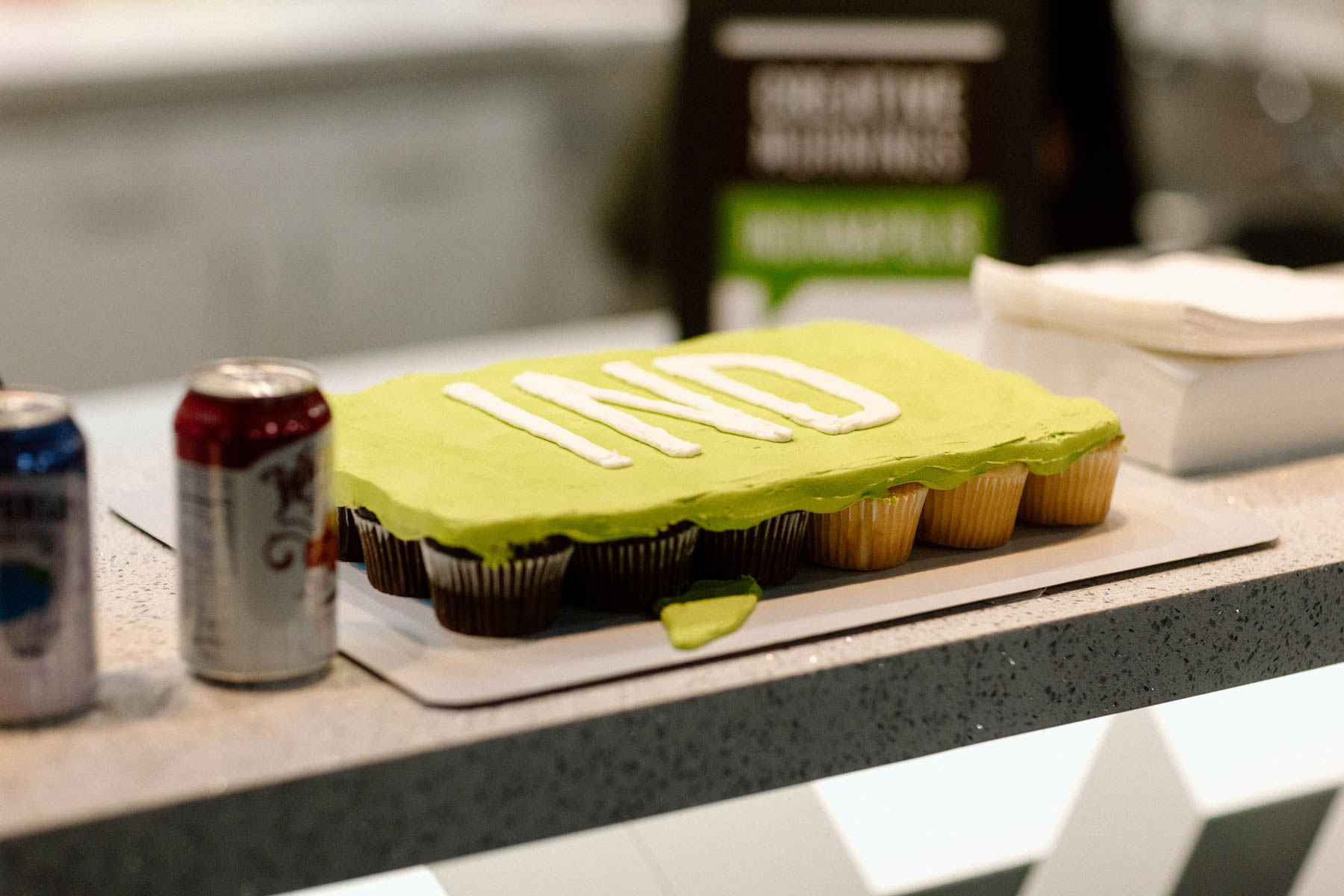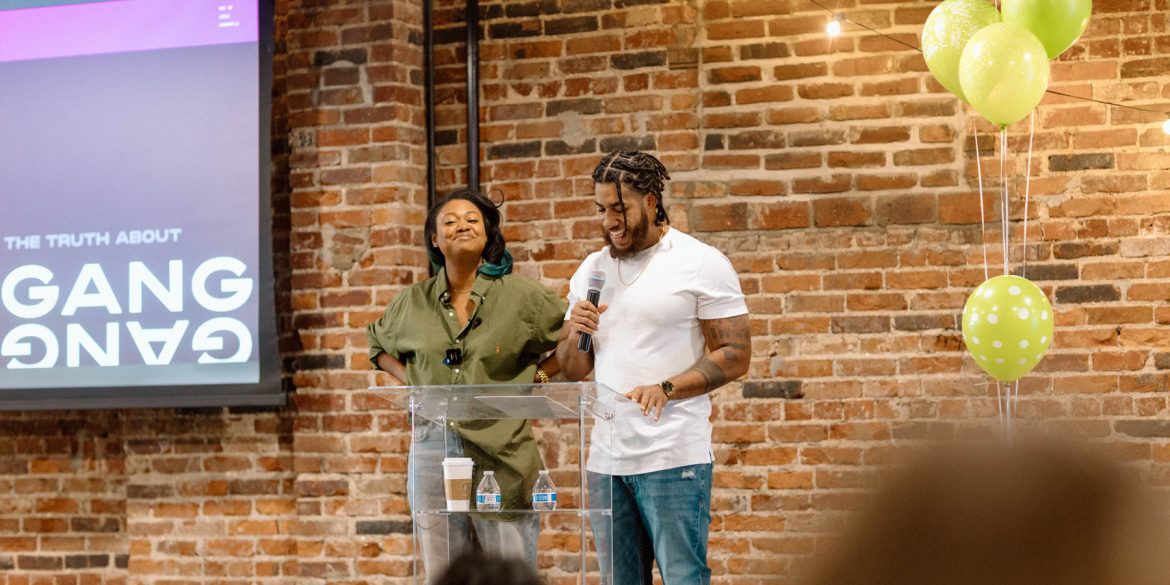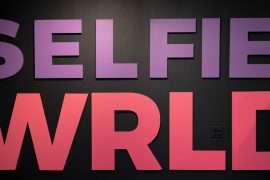“Donate. Collaborate. Pay the artists. Tell the truth.”
Last month was CreativeMornings Indianapolis‘ eighth birthday. GANGGANG founders Malina Simone Jeffers and Alan Bacon Jr. took the stage to speak on the topic of Truth. They decided to use this as an opportunity to share the truth about GANGGANG.
The event was held at Vision Loft with all seats filled, plus people standing in all corners of the room excited to celebrate CreativeMornings in Indy and to hear what Jeffers and Bacon would tell them. They shared personal stories and epiphanies with the hundreds of people in the room. They made it clear why truth is so important in the work that they do. To see so many creatives and organizations in the city show up for this event was a refreshing reminder of how much art and culture runs this city.
GANGGANG is working hard to make sure people in the creative industry are recognized and treated with equity. These are people who saw a need in the city, took inspiration from other places in the world prioritizing art, and incorporated that idea into Indy. They made a nationally noticed racist job posting into a strategic advancement of the community. Rather than participate in cancel culture, as was so popular at the time, they used this experience to hold the museum accountable and in tandem, uplift the artists of The Eighteen Art Collective. Now, two years later, one can go to Newfields and see what they made of the could-be setback.
GANGGANG is truth. They are an authentic representation of progress. They told the audience to “Donate. Collaborate. Pay the artists. Tell the truth.” After the speech and a first look at their newest promotional video by Marc Bessiake and Raymond Sarty Gaye, we sat down with the founders to discuss what the creative economy actually is, their inspirations, what their “north star” is, and how they respond to cancel culture.
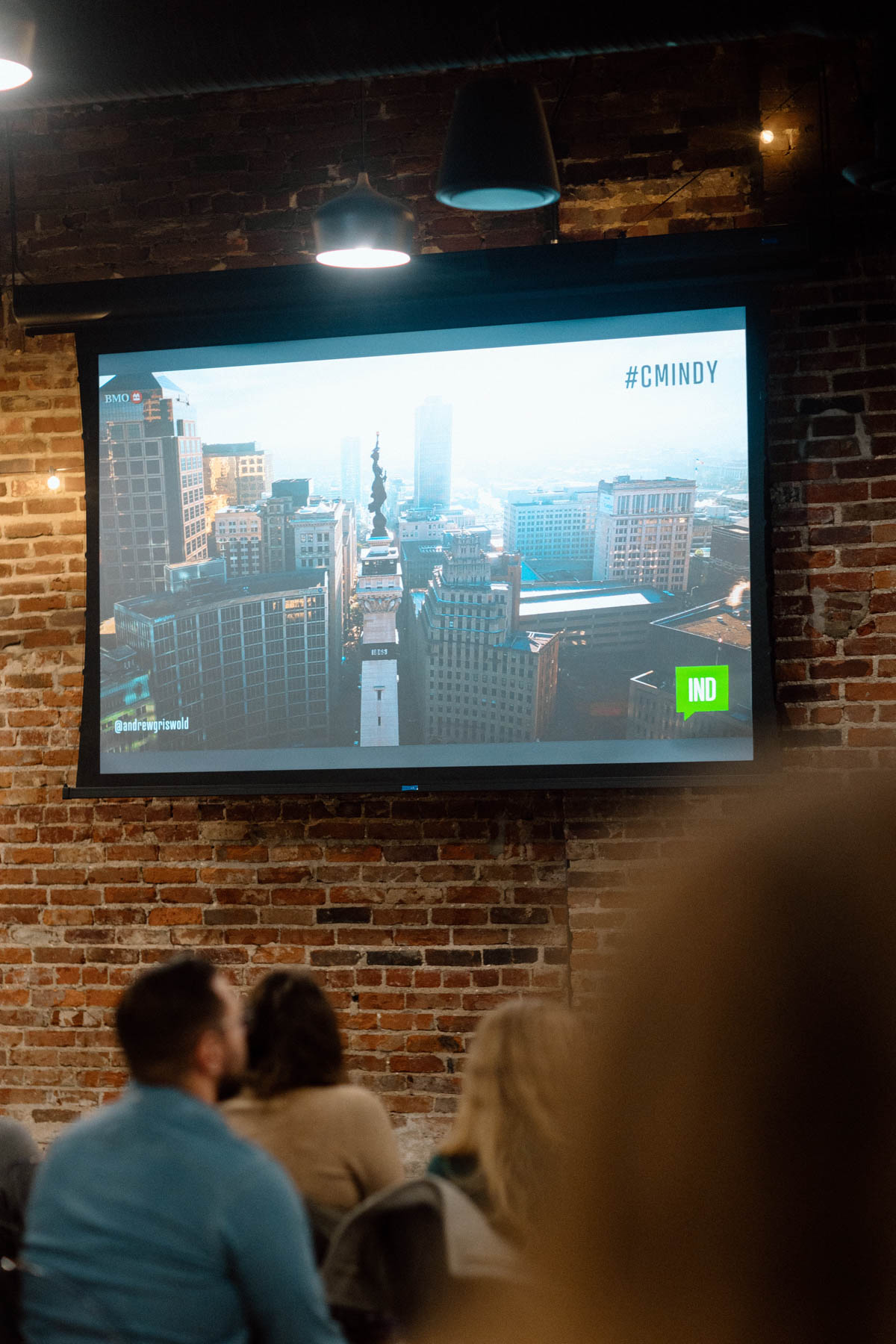
Cory Cathcart: With GANGGANG, what’s the bigger picture? How do you avoid only looking at the next step?
Malina Simone Jeffers: I think a lot of times organizations will describe our work in terms of the next project. People will say, “We’re really looking forward to BUTTER 3,” or “How are you going to develop the music fellowship program next year?” But we keep the “why” in front and think more in terms of this work being about reparations in the arts. That’s the driving thing. Solving reparations in the arts is big enough for that to only be the thing in front of us.
Alan Bacon, Jr.: There’s such a resounding sense of support that we have when we share messages, or when people are experiencing things we do like BUTTER. It’s also liberating that we’re able to harness this power of culture, and our north star is being able to connect people together and we found out how to do that in the most impactful way.
CC: What inspirations have you used in your work from traveling to other places?
MSJ: The cities that come to mind for me are Detroit, Atlanta, and Toronto. I think about Detroit because it’s a city that had to start over. It seems like everything there crashed within the last couple of decades, and the artists were left. We got to see—on a citywide scale—what usually happens in neighborhoods; the artists will go in, they’re making something work, they’re making a place cool, and now everybody wants part of that. Detroit restarted with art and culture at the forefront, and there’s some lessons that we can learn from them.
I think about Toronto and Atlanta because there’s such an international presence. It’s so culturally diverse that they feel like different places. I think that’s what we’re trying to create. What people want more of is a sense of, “I can be myself here.”
AB: A very tangible example is some inspiration for BUTTER came from visiting Art Basel in Miami. I liked the look, the feel, and the sensory aspect of how the whole entire city comes alive. We use some of that as a guiding point for how we wanted to manifest this art fair that we created, basically from nothing, to become the Black Basel of the midwest.
CC: How do you think Indianapolis inspires people from other cities?
MSJ: I’m most proud of our art sector, our creatives. We have a kick ass creative scene. Our artists are unique here because they’re such hustlers.They’re in a city that doesn’t have an infrastructure to support them. To have such vibrancy without infrastructure tells you about the grit of our people here. I can’t wait for more people to find out.
AB: A lot of that grit is born into the Black experience in America because we had to use art as a liberating tool to bring us out of slavery, to bring us out of Jim Crow, to bring us through civil rights, and to get us to this moment right now where we’re actually having this conversation. That’s pretty transformative and progressive, and it’s all about art.
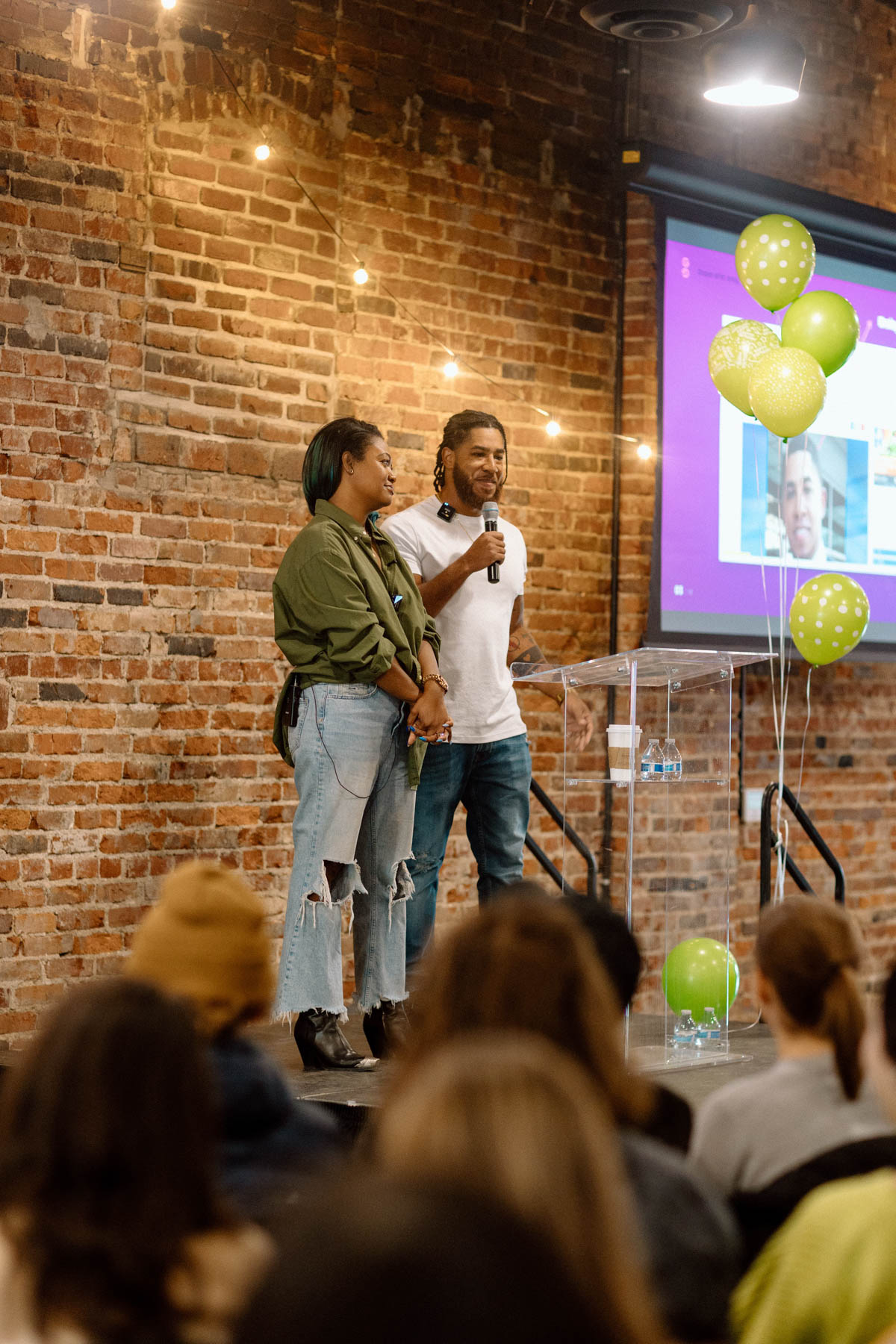
CC: You both talk about progression a lot. I think it’s important that in the situation with Newfields, rather than “canceling” them, you held them accountable and ended up having an exhibit highlighting local Black artists. How do you respond to people who participate in “cancel culture” in an eloquent way?
MSJ: It’s less strategic to cancel an institution, especially a civic one, because we have responsibility for it. Who is going to hold a civic institution accountable for their work, if not its community? If not the city’s residents? It’s our job, at least as it relates to civic institutions.
AB: In order to achieve true equity, there needs to be a sacrifice of privilege. Institutions, organizations, and people in power will not give that privilege away. If I “cancel” you then you keep one hundred percent of your privilege. We can’t get to the point of equity without that sacrifice. If I’m not making you sacrifice that, then that’s not a win for a progressive. That’s why it’s progressive, because something has to change. You can’t change anything if it stays the same. That was an issue with Newfields; that situation couldn’t remain the same. We want to introduce a new way of thinking that actually supports everybody. In order for that to happen you’ve got to dismantle it from within. That, to me, is progression. If I cancel you, you keep everything.
CC: Who do you turn to for wisdom and hope?
MSJ: Scripture.
AB: God.
MSJ: Love. Each other, our teenagers, and our parents. And also Beyonce, Oprah, Michelle Obama, and Jay Z.
AB: Curtis Mayfield.
MSJ: Definitely Jimi Hendrix.
AB: Little Richard, Maya Angelou, James Baldwin, Michael Jordan, Kobe Bryant.
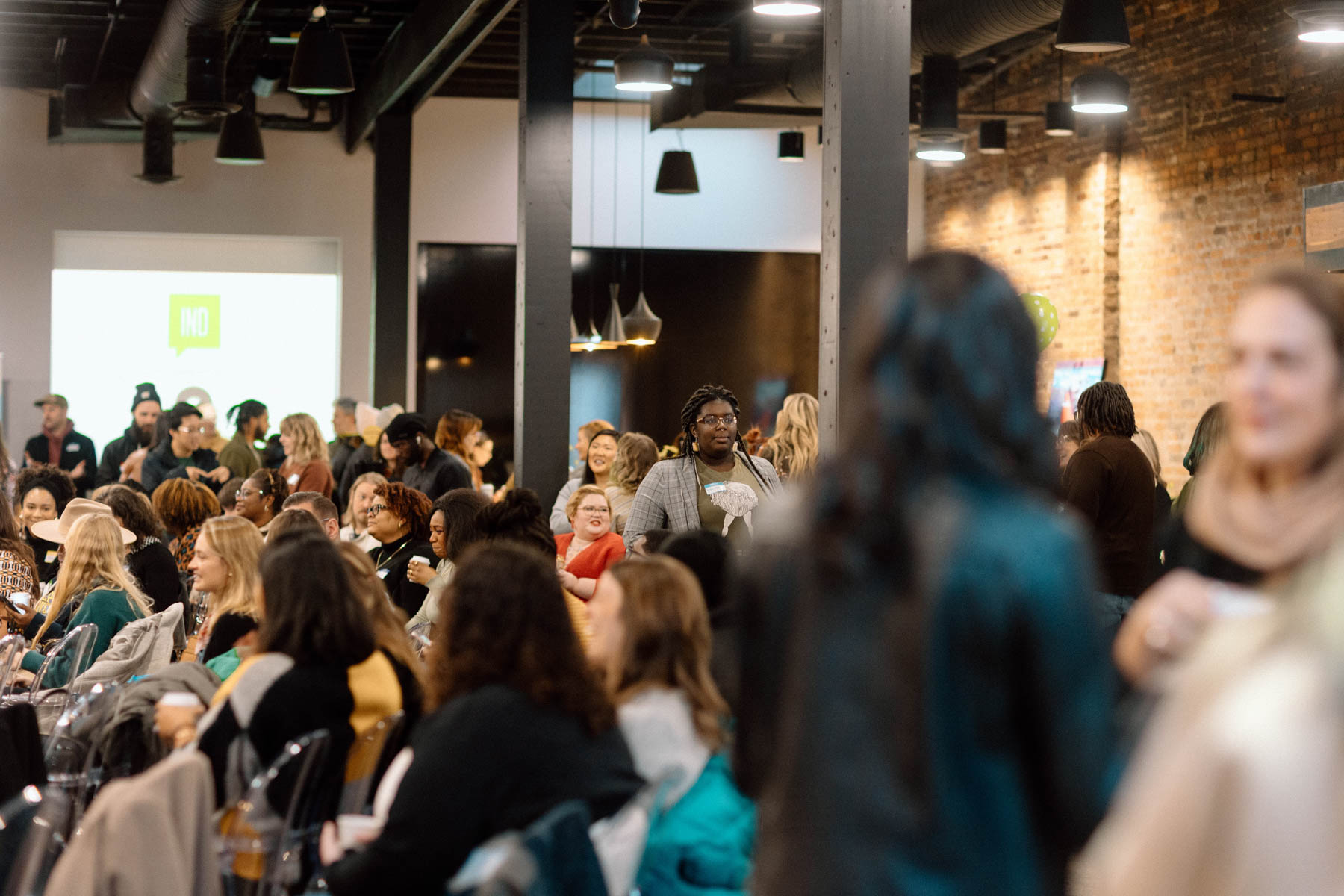
CC: How do you decide who and what you choose to put your energy into?
MSJ: My mind goes to choosing partners based on how big the opportunity is to tell a story. If we can get this message out as quickly and as big as we need to with this partner, great. I want to put more energy there. In terms of creatives, we’re most interested in working with the ones who want to be full-time professional artists. The ones that want to go right now, all in, professionally, on their art careers specifically.
AB: We like big vision—people that think a little wayward at times, and weird, and that are super curious. I think we go into it knowing that we’re going to help everyone, but we do understand that some boats may lift the tide in a more accelerated way. That’s the beauty of strategy and understanding what to do in specific situations, or who the person is, or who the partner is. How can that strategy puzzle piece help elevate and escalate what we’re trying to accomplish?
What do you really want to know? What’s the question you’re not asking?
CC: For fear of looking ignorant, or offensive to what it is we all do here… What actually is the creative economy? We hear that term so often, but it’s a hard thing to define and understand.
AB: The reason why Austin, New York, Toronto, Chicago, and Miami are so cool is because those cities understand the economic power and importance of the creative culture. In Indianapolis, we’re trying to get people to think of the creative environment ecosystem, or the creative industry, in the same lines as they do agriculture and tech. When we get the conversation of the narrative to that level is when we will begin to start talking about, “What does infrastructure look like to support this industry? How can we make sure that the industry continues to sustain itself?” That’s the conversation we’re trying to get cities to have around the idea of creative industry. Everyone has specific roles in what it looks like, but I understand how that can be confusing. Maybe we use creative industry instead of creative economy.
MSJ: I would explain it as simply a line item in a budget. If you think about a city’s budget, or a nation’s budget, we’re still trying to get the creative line item in the budget. It’s like the agriculture economy, or the straw economy, or the light bulb economy—we’re talking about the creative line item in cities and wanting to make that industry an equitable place. Everybody is already involved in the creative economy, they’re just not calling it that. Everybody’s hiring graphic designers to make their logos, and everybody is trying to figure out who to order their placemats from. Everybody is already participating, but they’re not labeling it that way. We’re trying to make the point that everybody is already touching the creative economy, so please just spell it out so we can give authorship and economic justice to the people in the creative economy creating everything.
AB: And you gotta think, there’s a reason why the creative industry, out of all industries, is the one at the bottom that receives the least amount of funding and doesn’t have the type of awareness or support it needs. This moniker of “the starving artist…” exists, why is that? Maybe it’s because of the Black experience in America, and that Black people make up a significant amount of the creative economy. You gotta think of the impact of slavery in everything; the construct that is around us. I think what we’re trying to do is dismantle the construct and rebuild it in an equitable way, and that’s what a renaissance is. It’s a rebirth.
